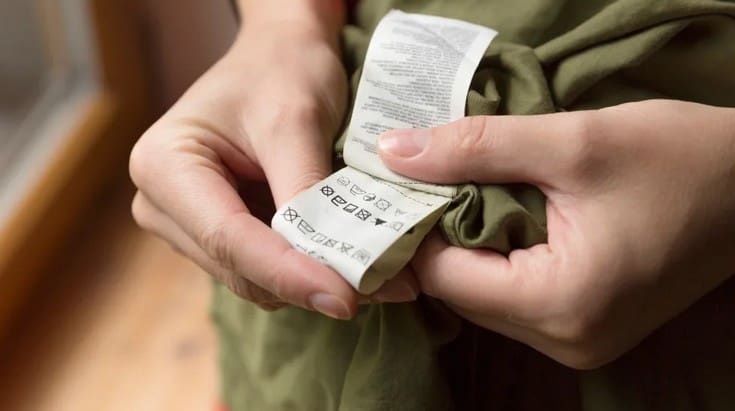Can You Steam Dry Clean Only Clothes? (Wash, Remove Stains, and Wrinkles Out)

There’s no denying that steam-drying clothes can be a fast and efficient way to get them clean. But is it the only way to go? Actually, no. There are other ways to clean clothes, such as using a dryer or washing machine.
There are a lot of misconceptions about how you can only steam clean clothes. In reality, you can also dry clean them using a machine. So, if you’re looking to save time and money, consider using both methods!
And if you’re worried about the environment, you might want to consider using eco-friendly cleaning products. So which is the best way to clean your clothes?
Can you only steam dry-clean your clothes? If the clothing is made of a delicate material that can withstand heat, the answer is yes.
However, you will need to dry items the old-fashioned way if they can’t be steamed, like denim, woolen sweaters, or cotton sheets.
Dry Clean Only Clothes
Definition of Dry Clean Only Clothes
Clothing that has the label “dry clean only” is made of delicate fabrics, has embellishments, or is constructed in a way that prevents it from being washed with water and detergent.
These garments should be professionally dry-cleaned to prevent damage. Examples of dry-clean only clothes include suits, dresses, coats, and gowns.
The Importance of Dry-Cleaned Only Clothes Care
Dry clean only clothes can be expensive, and proper care is essential to extend their lifespan and maintain their appearance. If these clothes get too hot or wet or are washed with water and detergent, they may shrink, fade, lose their shape, or get other damage. Therefore, it is important to follow the care instructions on the garment label and take care to protect the clothes from accidental spills or stains.
What Is the Dry Cleaning Process?
Dry cleaning is like normal laundry, except that instead of water and detergent, a liquid solvent is being used to clean your clothes. Dry cleaning is a process that uses solvents to clean clothes and fabrics that cannot be laundered with water and detergent.
Dirt, stains, and smells can be taken out of delicate fabrics and clothes with dry cleaning solvents. They are also gentler on the fabric than water and detergent.
The typical dry cleaning process involves a series of machines, people, and chemicals. The process begins with the clothes being placed in a machine, where they are sprayed with the solvent.
Dirt and grime on the clothes are broken up by the solvent and then pulled out of the fabric. The clothes are then dried and pressed. The solvent is then removed, and the clothes are ready.
While regular water is relatively safe to use, some people may still have concerns about the number of chemicals that may be used during the dry cleaning process.
There are a variety of different things that can be done to reduce the number of chemicals that are used in dry cleaning. When a garment is cleaned, the chemical used for cleaning is typically one that can be removed by heat or water.
Types of Dry Cleaning Solvents
It is important to note that not all dry cleaning solvents are created equal, and some can be more harmful to the environment or your health than others. Here is a look at the different types of dry cleaning solvents that are commonly used:
- Perchloroethylene, which is also called “perc,” is a chemical solvent that is used a lot in the dry cleaning business. It is effective at removing a wide range of stains and is relatively inexpensive, which is why it is so popular.
- Silicone-based solvents are a newer type of dry cleaning solvent that is gaining popularity. These solvents are derived from silicone oil and are considered safer for the environment and your health compared to perc. They are also effective at removing stains and odors and are less likely to shrink or stretch the fabric.
- Hydrocarbon solvents are another type of dry cleaning solvent that is derived from petroleum. They are considered safer for the environment and for your health compared to perc, and they are also effective at removing a wide range of stains.
What Happens if You Wash Something That Is Dry Clean Only?
If you have a dry-clean-only item, it is best not to wash it at all. However, if you need to or accidentally do so, there are some things you need to know.
- First, never put a dry clean only item in the washer or dryer. The heat will ruin the fabric.
- Second, always read the care label before washing. Some dry clean only items can be hand-washed with a mild detergent and cool water.
- If you decide to wash a dry clean only item anyway and it gets ruined, don’t blame the retailer. It is your responsibility to read the care instructions before washing.
Not just slightly, but considerably, the clothing may shrink. While some clothing will shrink by two to three sizes or more, drapes may only shrink by half. Your clothing may expand and become distorted. In some cases, it can be challenging to remove wrinkles from clothes that have been dry cleaned.
What Is the Difference Between Dry Clean and Dry Clean Only?
Many people don’t realize that there is a difference between “dry cleaning” and “dry cleaning only.” There is one significant distinction between the two terms. A piece of clothing that says “dry clean only” is made of a material that tends to fall apart if it is cleaned any other way. No additional cleaning methods should be used, according to the warning.
Dry clean only means that the garment should only be dry cleaned and not washed in water. This is because the fabric may shrink, stretch, or lose its color if it’s washed in water.
Does Dry Clean Only Really Mean Dry Clean Only?
In fact, “dry clean only” simply means that the item should be dry cleaned and nothing else. This means that you can wash it at home if you want; you just need to make sure it’s done properly. To do this, make sure to use a mild detergent and cold water.
You should also hang the item to air dry instead of putting it in the dryer.
The phrase “dry cleaning only” can be misleading. It could lead one to believe that the item can only be dry cleaned. In reality, this is often not the case. Many clothes with the “dry clean only” label can also be hand washed.
Dry cleaning should only be used for items with a specific coating or finish; most other items can be washed safely by hand. Even if an item says “dry clean only,” it’s usually okay to give it a try with some gentle soap and cold water. If it’s not working, then you can take it to a professional cleaner.
Can You Use a Steamer on Dry Clean Only Clothes?
The answer to this question is yes, you can use a steamer on dry-clean-only clothes. Before doing so, though, there are a few things you should think about.
- Check the care instructions on the garment label to make sure that it is safe to steam. Some fabrics, like wool, can be damaged by steam.
- Always test a small area of the fabric first to make sure that it doesn’t get wet or stained from the steam. If everything looks good, then go ahead and steam away! Don’t hold the steamer too close to the fabric or let it linger in one spot for too long, as this could cause damage.
- Steamers, whether they’re handheld or stationary, are great for regular household chores like ironing, cleaning, and general tidying. They’re also convenient for utensils that need to be steamed, like pans, pots, and other kitchen equipment.
- When steaming, use the appropriate setting for your fabric and type of material. If steaming a delicate cotton or linen garment, then it’s best to use a lightweight steam setting.
- For heavier materials like cotton and woolen clothing, you’ll want to use a higher steam setting. If you’re steaming a highly porous fabric like cotton or linen, it’s best to use the lowest steam setting.
Can a Steamer Remove Stains From Clothes?
There are all sorts of methods for removing stains from clothing. Some people use harsh chemicals; others use special detergents or stain removers. But there is one method that is often overlooked—steaming. Steaming can be used to remove a wide variety of stains, including those caused by blood, coffee, ink, and grease.
To remove a stain with steam, first identify the type of fabric the garment is made of. Not all fabrics can be safely steamed. Cotton and linen are generally safe to steam, while polyester and rayon should not be steamed. If you are not sure whether a fabric can be safely steamed, test it in an inconspicuous area first.
Below are simple steps for using a steamer to clean your clothes at home.
- Once you have identified the fabric type, fill a pot with water and place it on the stove.
- Heat the water to a boil and turn off the heat.
- Place the garment in the steamer, then secure it in place with rubber bands or a clip.
- You can also use an inexpensive (clothes) hanger instead of clips.
- Set the steamer on a flat surface and let it steam for at least ten minutes. For best results, steam your clothing every day.
- If you do not want to use a steamer, try using a dryer instead.
Final Thought
The question of whether you can steam dry clean only clothes at home is complicated, and there is no simple answer. Even though steaming can be a quick and easy way to freshen and deodorize your clothes, it is not a substitute for having them dry cleaned by a professional.
Dry clean only clothes are made from delicate fabrics or with embellishments or construction that make them unsuitable for washing with water and detergent. Steaming these garments could potentially cause shrinkage, fading, or other damage.
However, if you are traveling and do not have access to a dry cleaner, you may need to steam dry clean only your clothes in a pinch. In these cases, it is important to use caution and follow the tips for safely steaming dry-clean-only clothes that were mentioned earlier.
This includes testing a small, unnoticeable area before steaming the whole garment, using a lower temperature setting on the steamer, keeping the steamer further away from the garment, and using a press cloth to protect the fabric.

